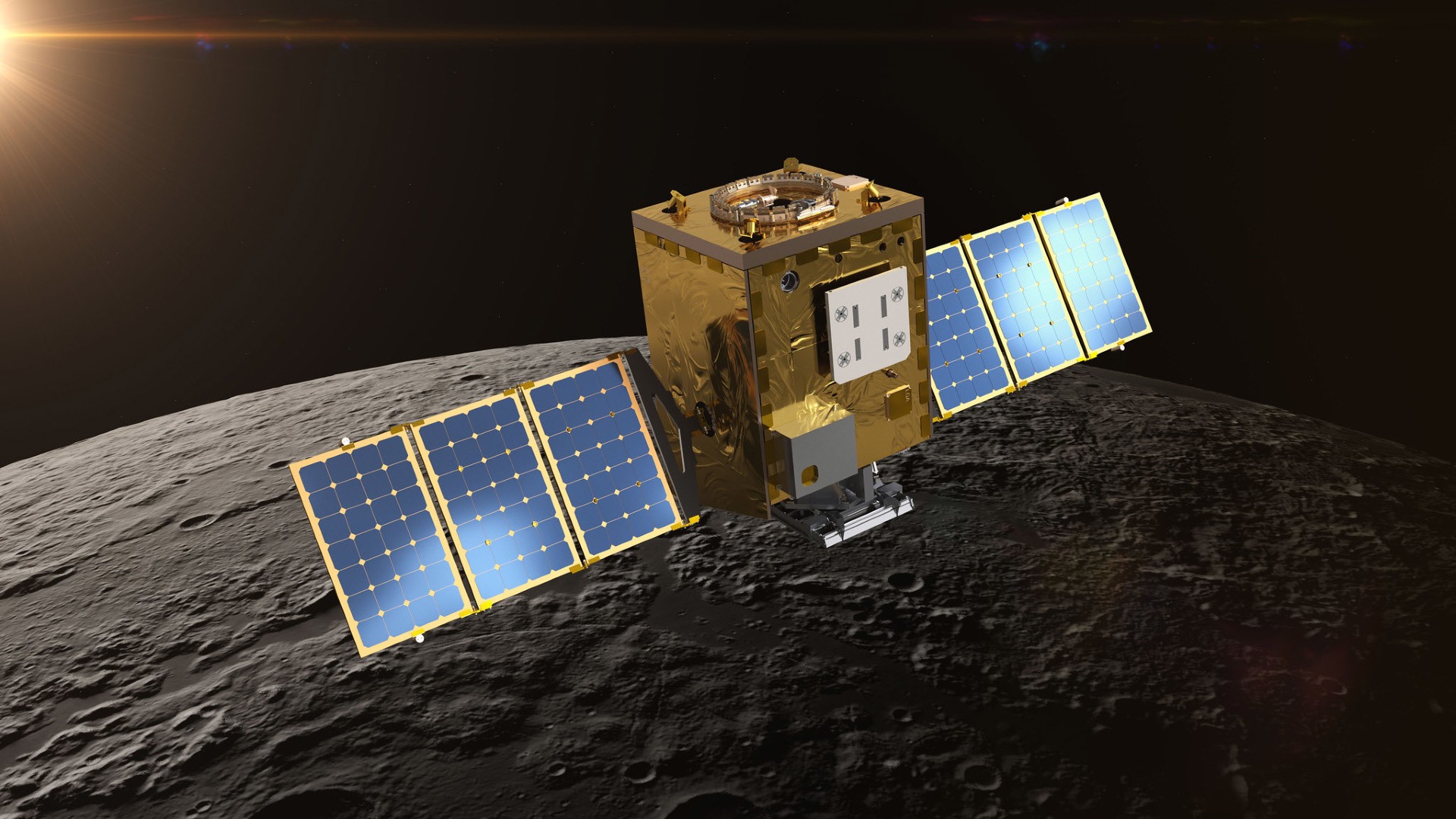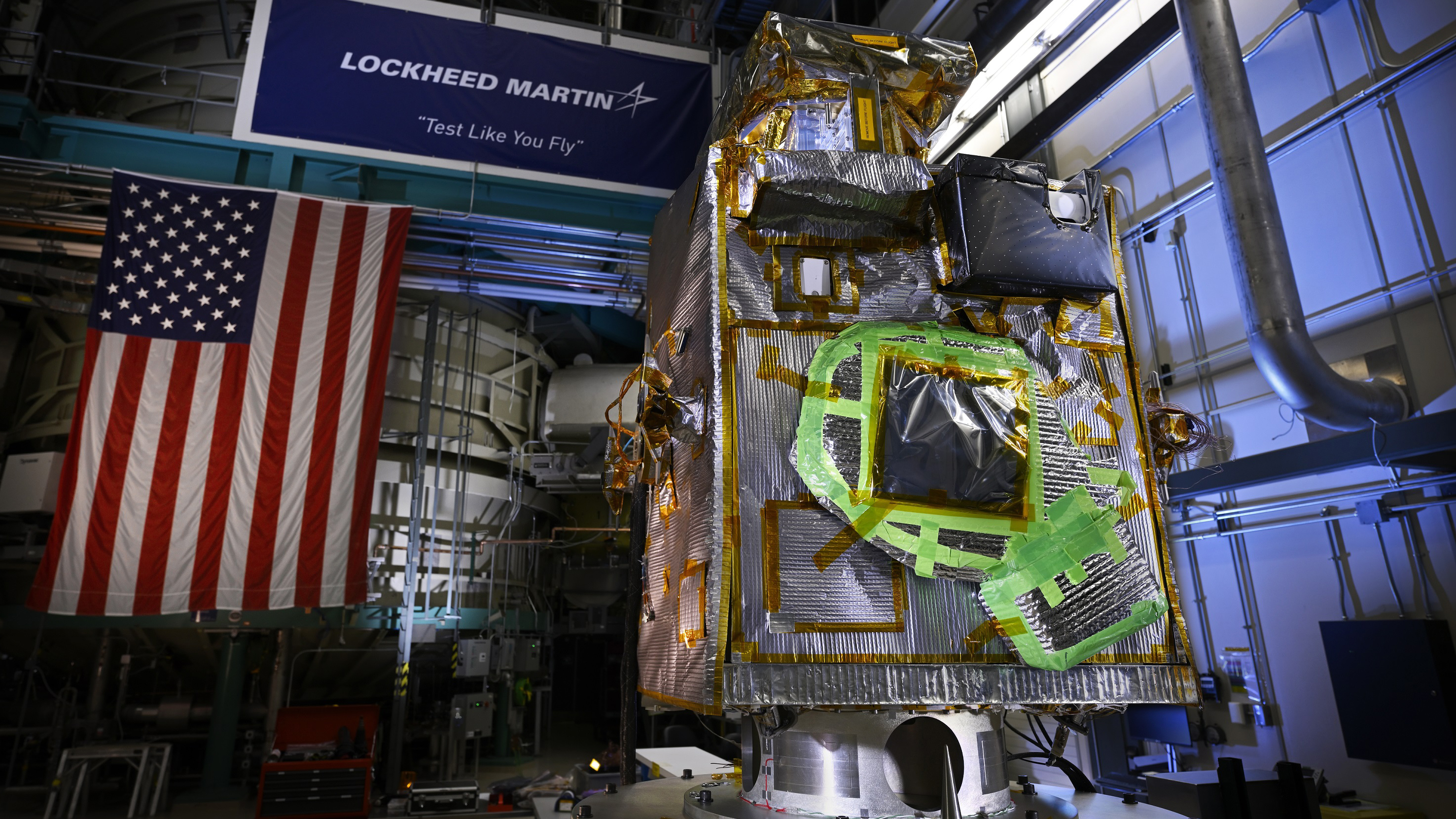NASA's Lunar Trailblazer satellite is ready to hunt for water on the moon
Lunar Trailblazer joins a growing list of probes and landers heading toward the moon to search for water ice.

NASA's Lunar Trailblazer mission is almost ready for liftoff.
The Lockheed Martin-built Lunar Trailblazer satellite is fairly small as satellites go, measuring just 11.5 feet (3.5 meters) wide and weighing around 440 pounds (220 kilograms). When it launches no earlier than 2024 on a yet-to-be-determined rideshare mission along with the Intuitive Machines IM-2 mission, it will hunt for water on the moon's surface and attempt to map its abundance and distribution.
The satellite recently received the second of its two instruments, the Lunar Thermal Mapper (LTM) sensor built by the University of Oxford in England. LTM is designed to use infrared light to map the surface temperature of the moon as well as mapping variations in the minerals that make up the lunar surface, according to a Jet Propulsion Laboratory (JPL) statement. Doing so will enable the satellite to identify lunar locations where water might be found.
Related: The moon: Everything you need to know about Earth's companion
"Designing, building, testing and now delivering LTM for its trip to the moon is a fantastic example of the innovative and dedicated teams at Oxford and across the U.K., especially given the challenges of the recent pandemic," University of Oxford physicist Neil Bowles said in the statement. "The data from the mission will help us to understand how water is transported across the surface and potentially captured in cold traps near the lunar poles, allowing follow-up from future human robotic exploration."

The other instrument aboard Lunar Trailblazer — the High-resolution Volatiles and Minerals Moon Mapper (HVM3), built by NASA's Jet Propulsion Laboratory in Southern California — was installed on the satellite in 2021. It is designed to measure the wavelengths of sunlight reflected off of the moon in order to detect the chemical fingerprint of possible water on the lunar surface.
"The Lunar Trailblazer mission will bring us fascinating insight into the nature of water on the moon, which will improve our understanding of our natural satellite and how we could harness its resources to support exploration in the future," said Libby Jackson, Head of Space Exploration at the UK Space Agency.
Get the Space.com Newsletter
Breaking space news, the latest updates on rocket launches, skywatching events and more!
Lunar Trailblazer joins a growing list of probes and landers heading toward the moon in order to search for water ice that might be used by future crewed missions to Earth's natural satellite. NASA launched the LunaH-Map cubesat along with the Artemis 1 mission in November 2022, which was designed to detect water ice on the lunar surface.
And NASA's ShadowCam aboard the Korea Pathfinder Lunar Orbiter (KPLO) has been mapping potential landing sites near the moon's south pole, where the crewed Artemis 3 mission is expected to land in 2025, if all goes according to plan. The lunar south pole is believed to be rich in water ice that could potentially be used by future moon astronauts.
And it's not just the United States looking for water ice on the moon. Russia's Luna-25 mission and India's Chandrayaan-3 are both expected to land on the moon this month to prospect for lunar water.
Join our Space Forums to keep talking space on the latest missions, night sky and more! And if you have a news tip, correction or comment, let us know at: community@space.com.

Brett is curious about emerging aerospace technologies, alternative launch concepts, military space developments and uncrewed aircraft systems. Brett's work has appeared on Scientific American, The War Zone, Popular Science, the History Channel, Science Discovery and more. Brett has English degrees from Clemson University and the University of North Carolina at Charlotte. In his free time, Brett enjoys skywatching throughout the dark skies of the Appalachian mountains.









